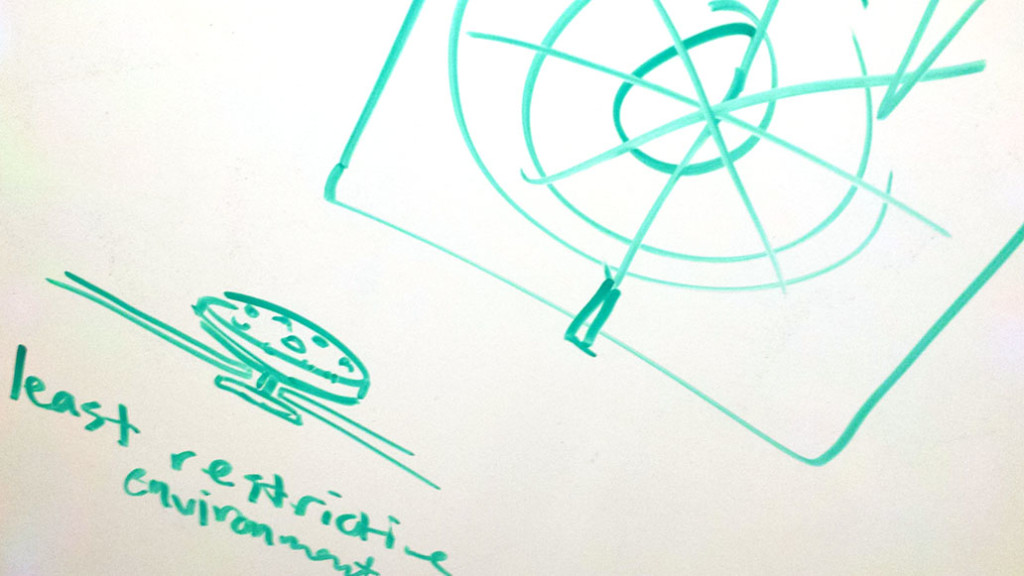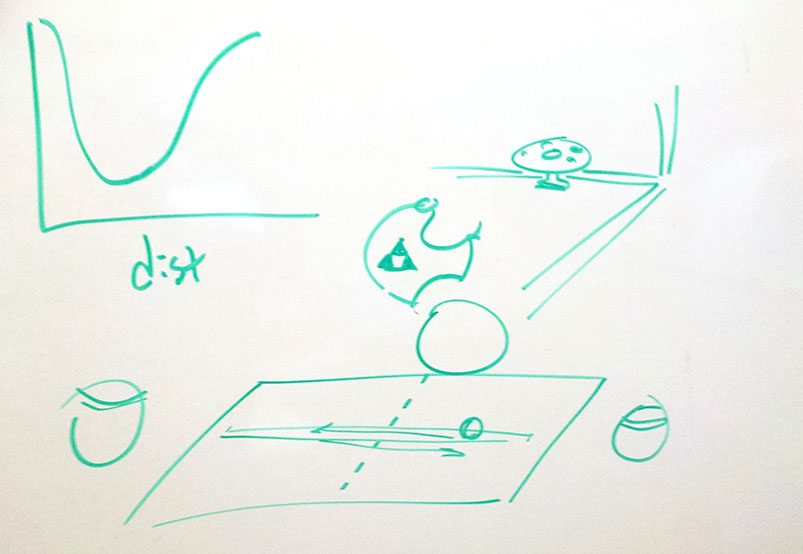Max Mahoney (Professor of Chemistry) had an idea about using the Innovation Center’s 3D printer to create some manipulatives to help demonstrate to chemistry students concepts of atomic bonding. Something like this:
Here’s what Max has to say about it:
The nature of chemical bonds is rooted in complex physical forces. These forces result in atoms being both attracted and held apart at a specific distance. We hope to develop a hands-on model for students, which conveys this important chemical information. Currently available designs of molecular model kits allow the construction of complex molecules in 3 dimensions, but do a poor job of representing the exact nature of each chemical bond. Our goal is to create a model that will allow students to feel the chemical bond and see the bond lengths. The recently discovered ‘inverter magnets’ have the property of both repelling and attracting each other, so that the atoms seem to hold each other in a ‘tractor beam.’ The distance they are separated represents the bond length.
Initial designs will focus on demonstrating the principle of bond length and bond vibration between two atoms. Enclosures for the inverter magnets are currently being 3D printed and their shapes optimized. These models use strong neodymium magnets so that students can feel the significant push and pull of the two ‘atoms.’ Magnets of different strengths will result in varying degrees of bond strengths (and vibrational rates), which can be measured by the student using force gauges.
Subsequent designs of these models will demonstrate each atom’s unique bonding pattern. Specialized cases for the inverter magnets will be 3D printed to mimic an atom’s ability to form multiple bonds.
The key aspect of these models is that the magnets do not touch and can be made to vibrate at a specific frequency so that the model is dynamic. Currently, students are taught these concepts with either static models, or with video animation. The strength of our model lies in the ability for students see and feel tangible objects displaying atomic principles on a macro scale.
We did some design talking/drawing:
Max went home, bought some magnets, taught himself SketchUp, and has printed a few different prototypes.
Stay tuned…



